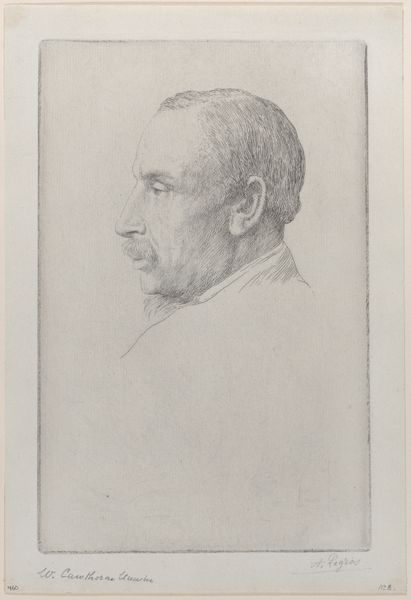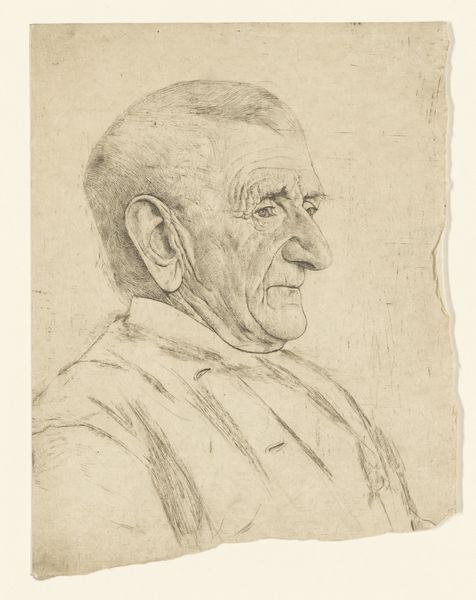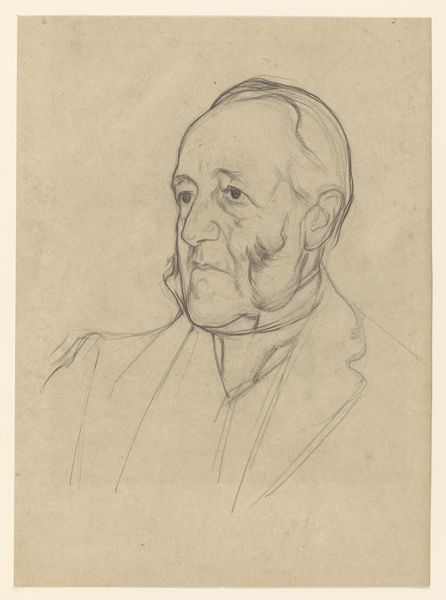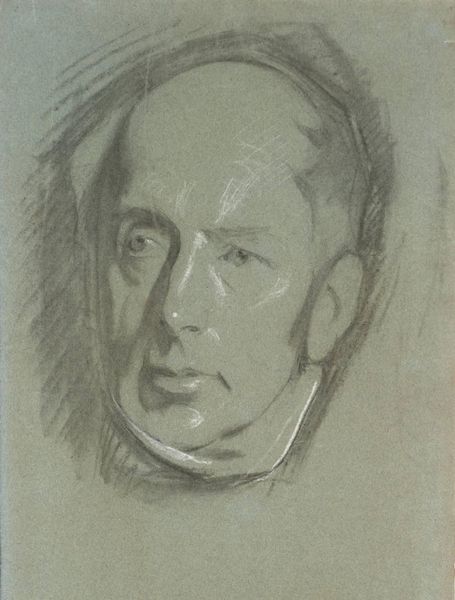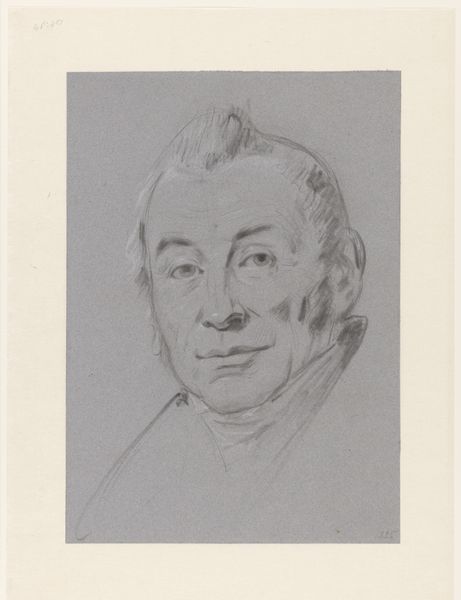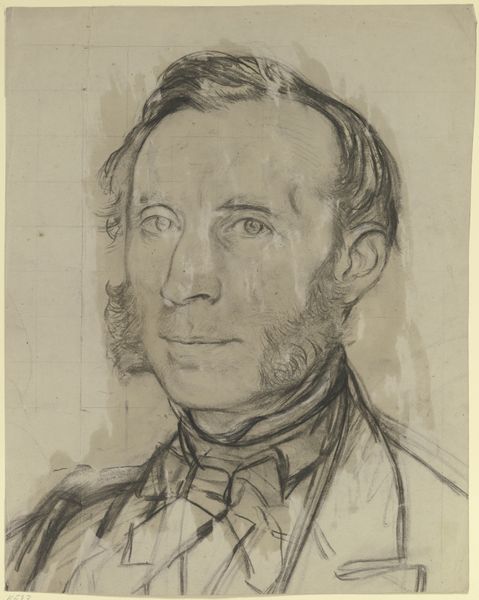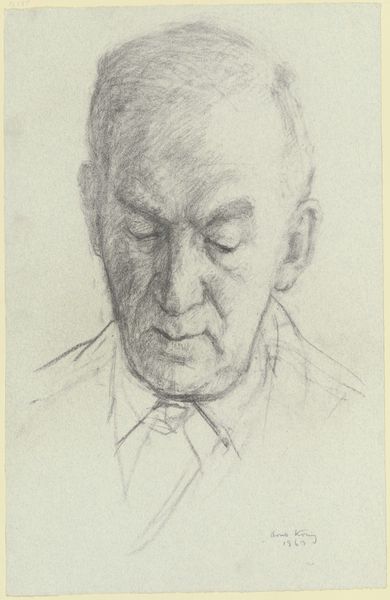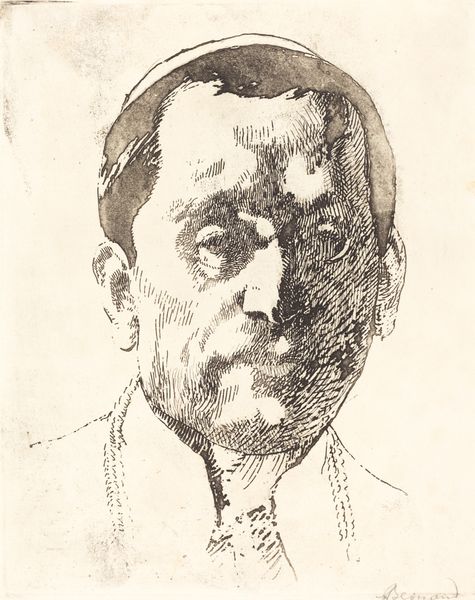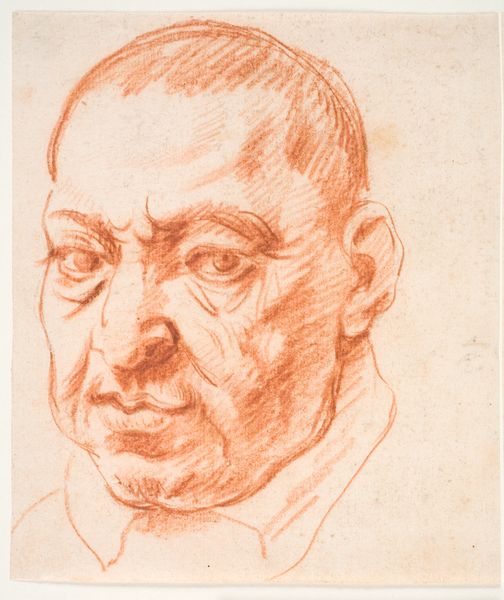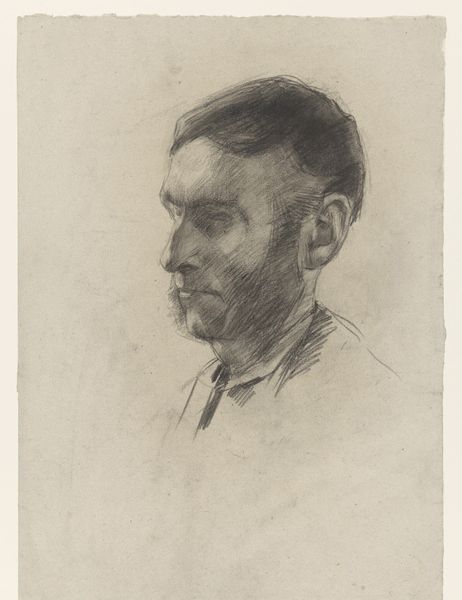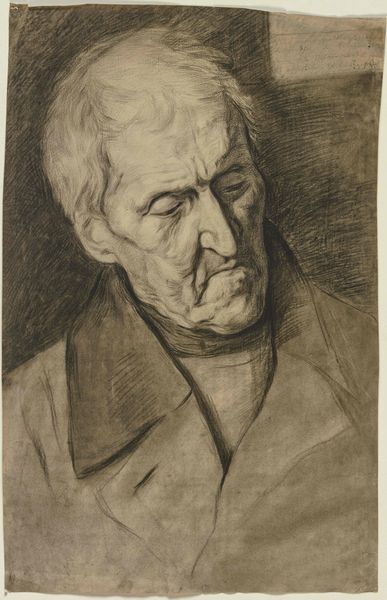
drawing, pencil, graphite
#
portrait
#
pencil drawn
#
drawing
#
charcoal drawing
#
pencil drawing
#
pencil
#
graphite
#
portrait drawing
#
modernism
#
realism
Dimensions: height 257 mm, width 187 mm
Copyright: Rijks Museum: Open Domain
Pieter Willem van Baarsel sketched this portrait of architect Jan Rebel in 1931 using graphite on paper. The most striking feature here is the architect’s gaze, direct and contemplative. Consider, the significance of the gaze dates back to ancient portraiture where a direct stare was meant to convey power and presence. We can see how this symbol evolved through Renaissance art where the gaze became a tool for psychological insight, reflecting the sitter's inner thoughts. In Rebel’s portrait, the gaze conveys a sense of his inner intellectual life. It also shows the universal need to capture and immortalize human presence, reflecting both the sitter's and the artist's self-regard. This desire transcends time, and continues to be a powerful force in art.
Comments
No comments
Be the first to comment and join the conversation on the ultimate creative platform.
